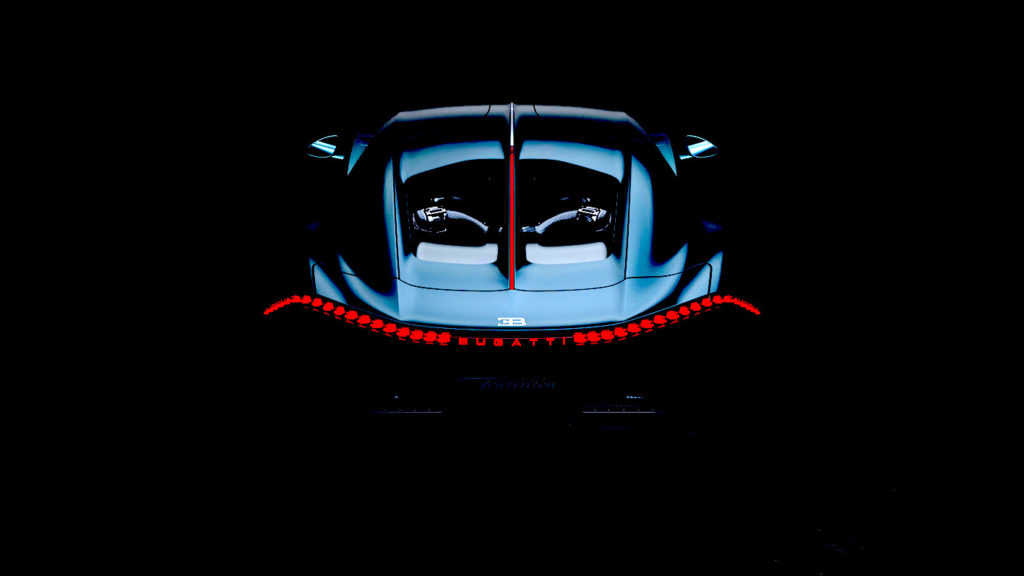
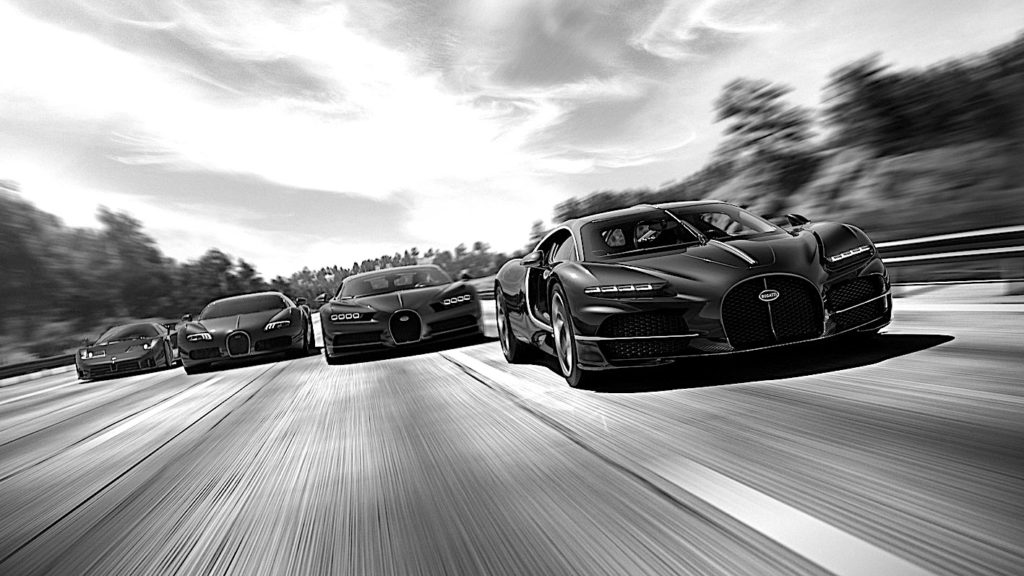
Who better than Bugatti to tell us about Bugatti. It’s not usual for LIGNES/auto to rely entirely on manufacturers’ information without analysing or comparing it. We’re making an exception here with the new Bugatti Tourbillon because, if we’re right, you’re unlikely to be a future owner of this incredible machine.
So let’s hear from Bugatti about the Tourbillon, which is now entering its test phase, with prototypes already on the road in anticipation of deliveries to customers in 2026. Production will be limited to 250 examples, with a starting price of €3.8 million net. Hand-assembly will take place at the Bugatti Atelier in Molsheim. And as a nod to Bugatti’s ‘La noire’, we present the Tourbillon in mostly black and white!
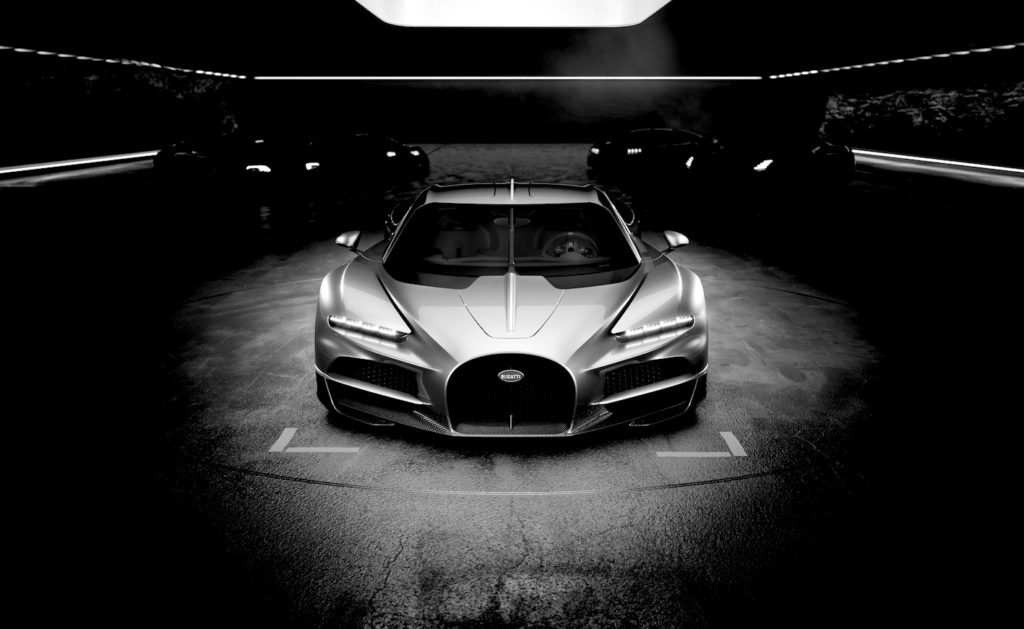
Mate Rimac, CEO of Bugatti, says: “The development of the Bugatti Tourbillon has been guided every step of the way by the 115-year history of Bugatti and by the words of Ettore Bugatti himself: ‘If it’s comparable, it’s not Bugatti’. Legends such as the Type 57SC Atlantic, recognised as the most beautiful car in the world, the Type 35 – the most successful of all time – and the Type 41 Royale – one of the most ambitious luxury cars to date – are the three pillars that have inspired us. Beauty, performance and luxury are the key words that have guided the design of the Tourbillon, a hypersports car whose elegance, emotion and luxury surpass everything that has been done to date. Incomparable, quite simply. And as with those icons of the past, we have designed it not just for the present, nor even just for the future, but for all eternity.
For the first Bugatti in over 20 years not to be powered by the W16 engine, the brand has departed from the tradition of naming models after legendary Bugatti drivers. Its name – the Tourbillon – was chosen to perfectly express its character. A French word and a subtle nod to Bugatti’s French heritage and its headquarters in Molsheim, the Tourbillon takes its name from the watchmaking invention of a Swiss genius who lived in France in 1801. A totally original creation, it was both beautiful and complex, counteracting the effects of the Earth’s gravity on the timepiece to ensure that time was measured with the utmost precision. And 200 years later, it is still considered the pinnacle of watchmaking.
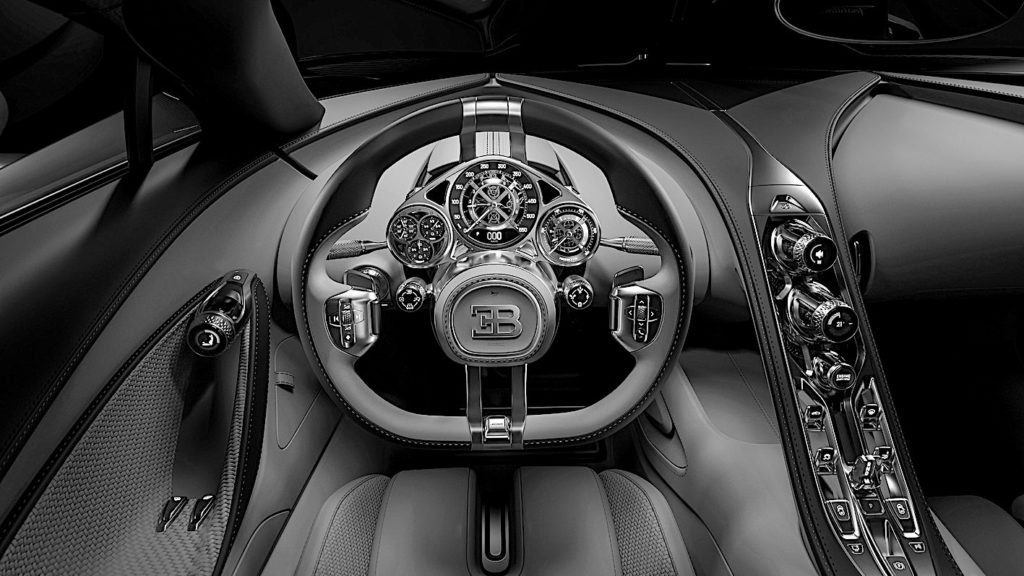
It is this sense of mechanical timelessness that lies at the heart of the project that gave birth to the Bugatti Tourbillon.For a hypersports car destined to take pride of place on the concours d’élégance lawns of this century and the centuries to come, technology can easily become obsolete – especially large digital screens – so for Bugatti, it’s important to incorporate as many timeless components as possible.So the Tourbillon uses timeless design and engineering techniques, including fully analogue instruments, made by Swiss watchmakers, and finished with the same care and attention as the world’s greatest timepieces.
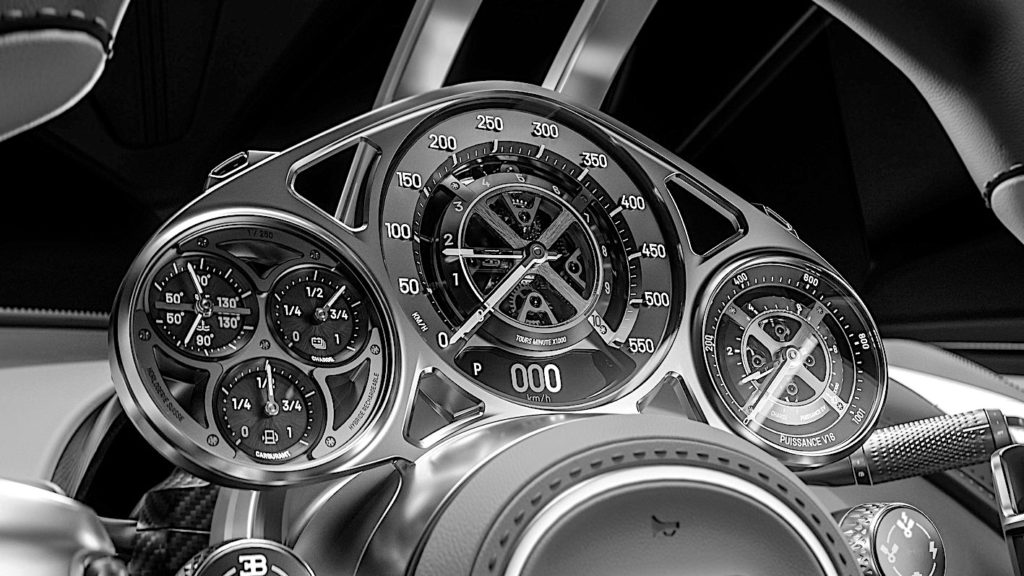
Just as these objects become family treasures that are handed down from generation to generation, the Tourbillon is a hypersports car… for eternity.Like all modern Bugattis, the Tourbillon is built for speed.To be able to travel at over 400 km/h, every surface, every air intake and every edge must be perfectly polished, to ensure that every detail is not only aerodynamic, but also beneficial to the vehicle’s thermodynamics. This is the guiding idea behind the Tourbillon, which then takes shape around four design elements inspired by the brand’s history: the horseshoe grille, the Bugatti line, the central ridge and the two-tone combination.
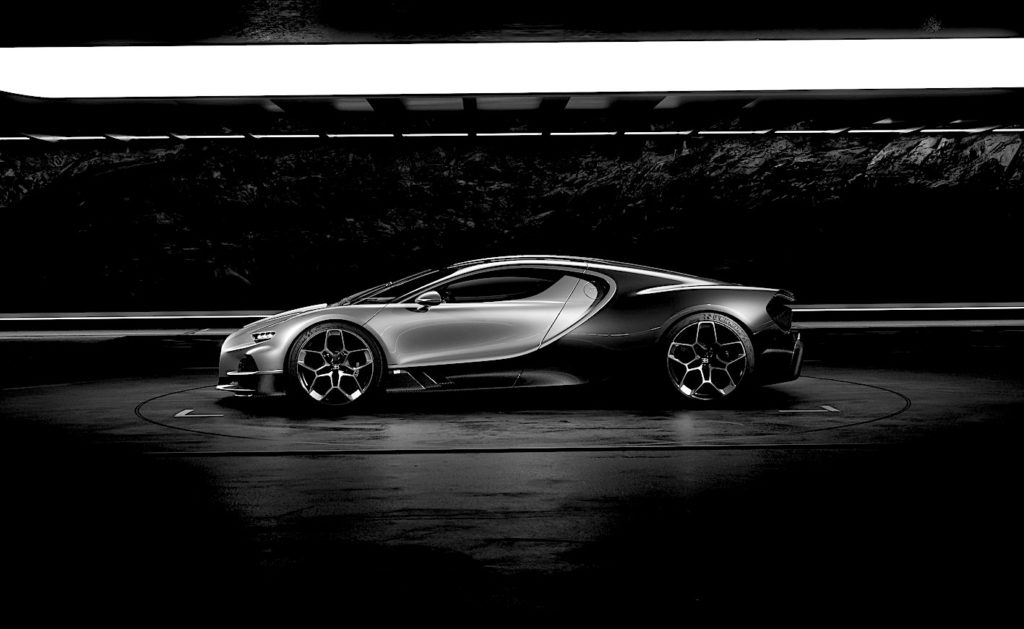
Frank Heyl, Bugatti’s Design Director, said, “The genius of Ettore and Jean Bugatti’s creations lies in their aerodynamics, innovation and immutable beauty. Our inspiration comes from the Bugatti Type 35, whose silhouette was guided by the shape of the horseshoe grille, which tapered towards the rear to form a streamlined fuselage.We’re also inspired by the Type 57SC Atlantic – where the letter ‘S’ stands for Low – by lowering the front end, the roofline and the driver’s position, creating that wonderful stance and dreamlike proportions.”
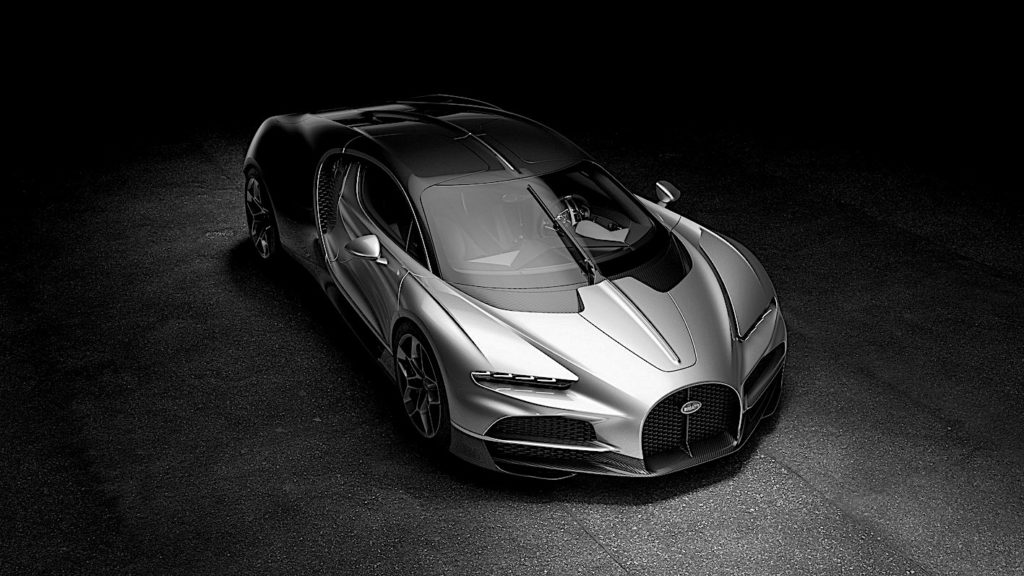
“We felt it was essential to position the volumes in such a way that they were functional and supported the extreme proportions. When the Tourbillon is lowered, it appears wider and the rims are highlighted.Since Jean Bugatti began adorning his creations with a bold two-tone colour, it has become an essential part of Bugatti’s design DNA. In the Tourbillon, we are once again bringing it to life in an authentic, yet resolutely modern way.”
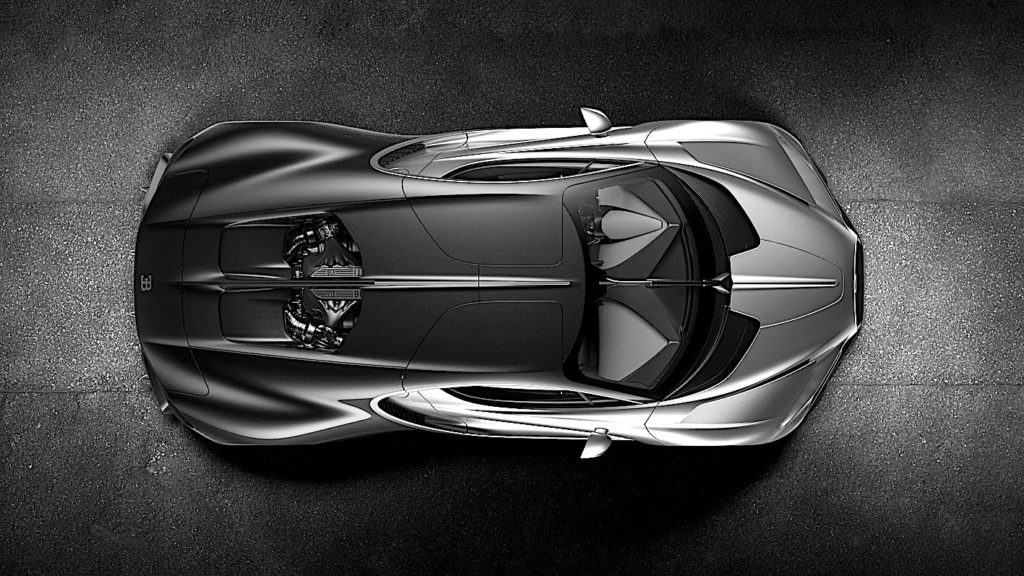
“This visual distinction is based on our fourth essential design element: the Bugatti line, inspired by the lines and colour combinations of the Type 41 Royale and revived in the Veyron and Chiron1, which are an essential design element in these models. In keeping with our new proportions and lowered roofline, the Bugatti line now describes a more pronounced curve, sloping slightly forward while snaking around the roof to give the profile a bouncy movement.”
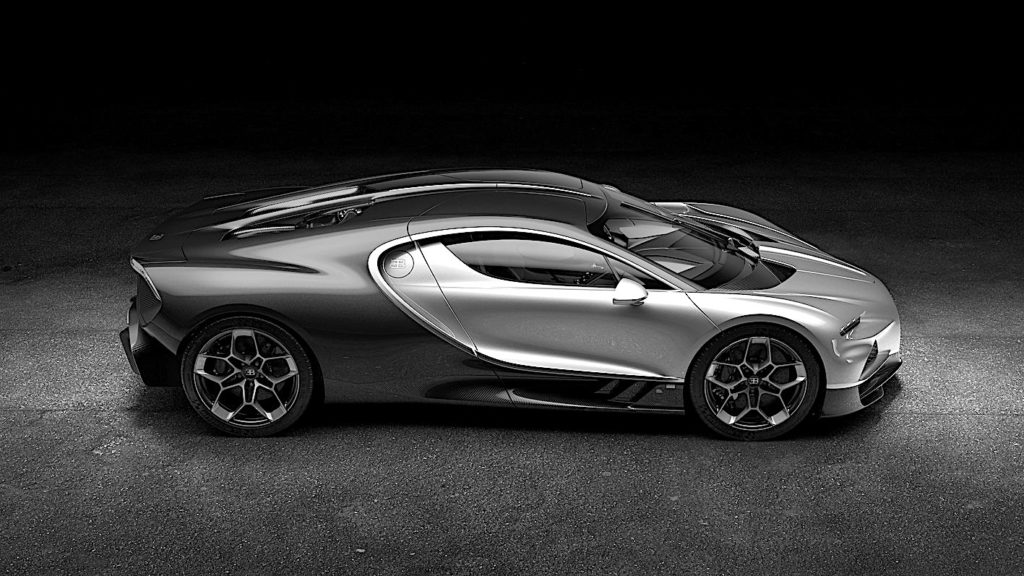
Drawing on more than 20 years of know-how from the Veyron and Chiron, the Tourbillon boasts a host of patented technologies. The perfect balance of forces generated by these innovations ensures that the rear spoiler remains in the retracted position when the car reaches top speed. This spoiler increases downforce at low speeds and acts as an airbrake to improve stability during deceleration.
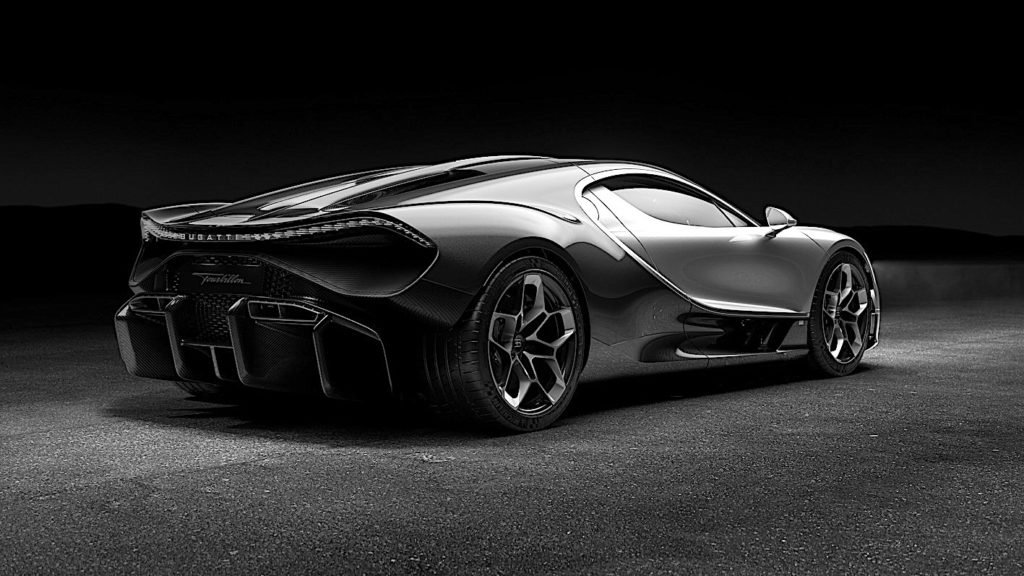
This aerodynamic balance is largely the result of the new diffuser concept, which begins its ascent just behind the passenger compartment, almost halfway up the vehicle, at an optimum angle, ensuring the Tourbillon’s perfect stability. The diffuser is built around an entirely new anti-collision concept that is fully integrated into the structure of the diffuser itself. As a result, it is both extremely effective and virtually invisible, enabling the open design of the rear end.
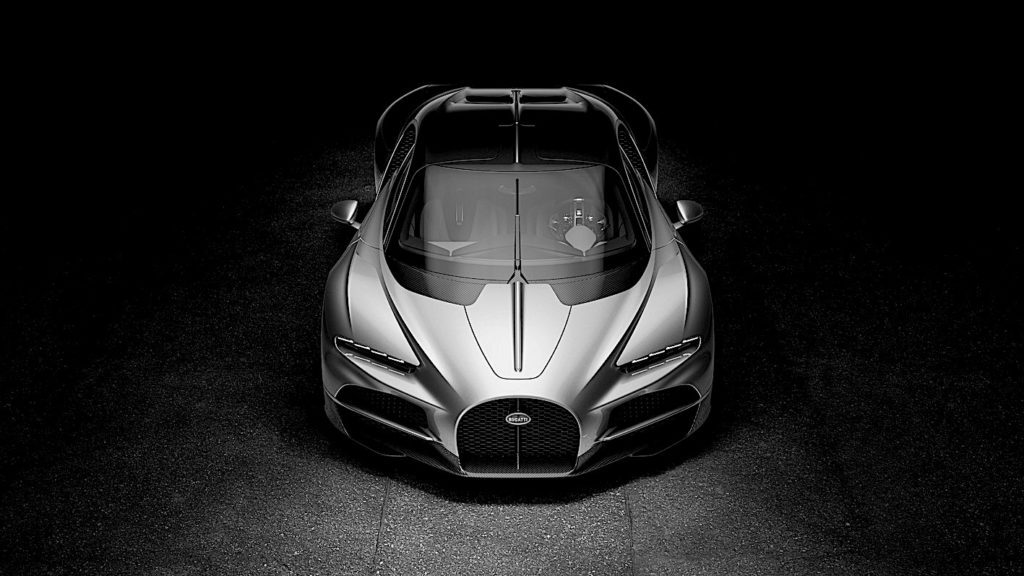
At the heart of the Tourbillon’s design philosophy lies the emblematic horseshoe, the starting point for all the Tourbillon’s lines, where the volume of the central fuselage is defined. On either side, the air flows under the headlights to increase the flow in the side air intakes. This complex interplay of air flows is also evident in the front-end design. While retaining the dimensions of a sculpted eaves, it ingeniously houses a highly efficient cooling system that guides air through and then out of the front bonnet, increasing downforce while integrating a spacious boot between the two radiators. Two sophisticated power-operated dihedral doors not only allow easy entry into the vehicle, but also mark the opening in spectacular fashion. They can be opened and closed in three different ways: using the key, the opening button just below the Bugatti line, or the button on the centre console.
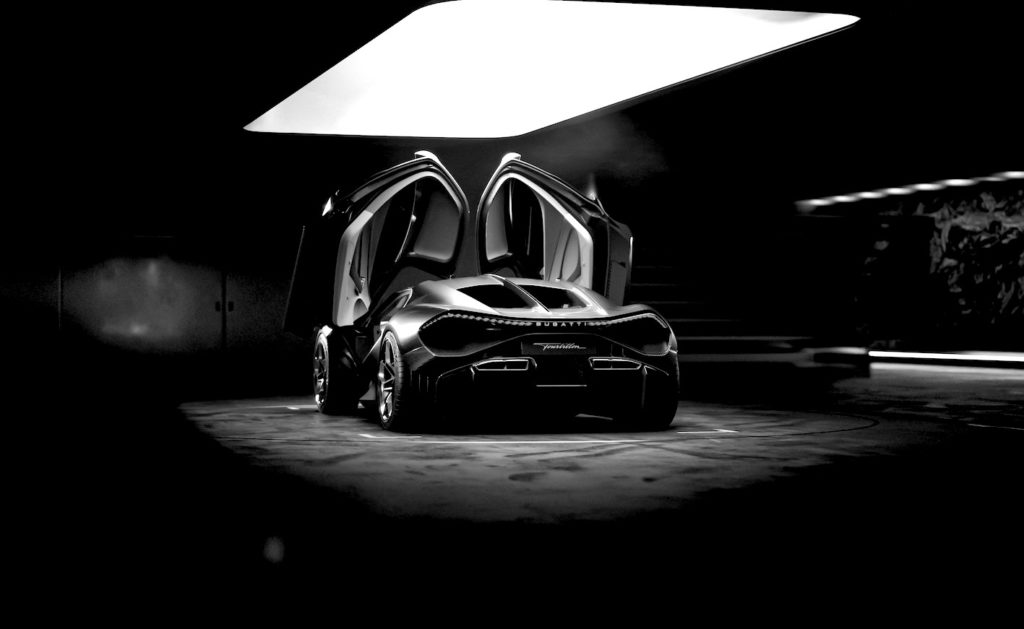
Since carmakers began integrating digital and touch screens into their models, the innovations have been such that in just ten years, these technologies already seem obsolete. The design of the interior was guided by a philosophy of timelessness, imagining the Tourbillon on the lawns of concours d’élégance not just in ten years’ time, but more importantly in 100 years’ time. Inspired by the world of watchmaking, in which wristwatches more than a century old can still be worn and used today, while integrating perfectly with modern fashion and lifestyle, the engineers and designers created an authentic analogue experience in the cabin.
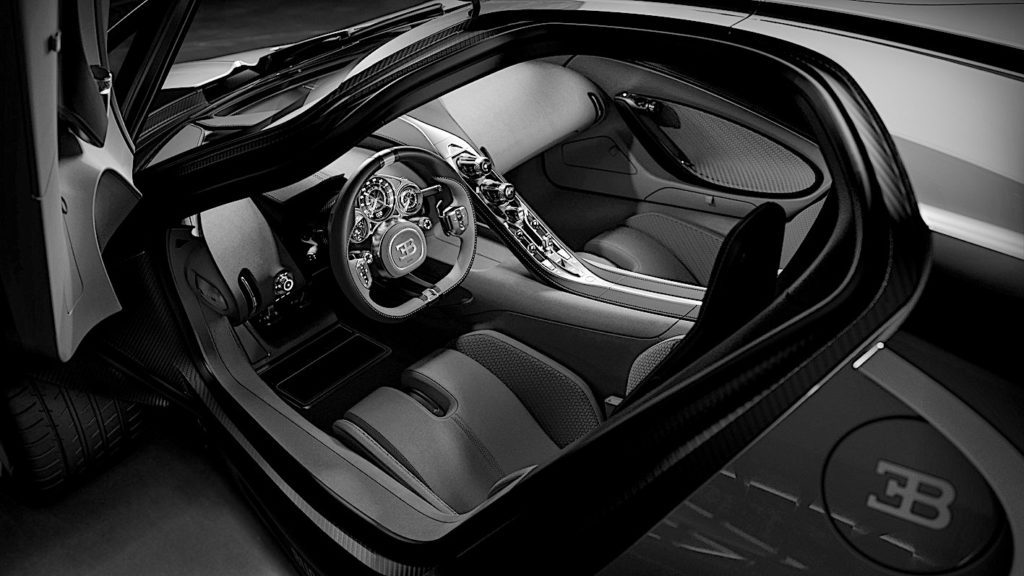
The centrepiece – the dashboard instruments designed and crafted with the expertise of Swiss watchmakers – takes watchmaking inspiration to the extreme. Comprising more than 600 parts, made from titanium and incorporating precious stones such as sapphire and ruby, the instrument panel is designed to a maximum tolerance of 50 microns – the smallest being 5 microns – and weighs just 700 grams. This complex engineering masterpiece remains the focal point of the driving experience, around which the steering wheel rotates – a configuration known as the ‘fixed hub steering wheel’. Thanks to this ingenious concept, the Tourbillon driver enjoys an unobstructed view of his or her instruments, whatever the steering angle.

The centre console combines crystal glass and aluminium, revealing the complex operation of all the buttons and the engine start lever. The glass was developed in 13 separate stages to ensure perfect transparency, extreme resistance and optimum safety in the event of an accident. The aluminium parts are anodised and milled from a single block of metal, while the knurled aluminium buttons are at the heart of a complex mechanism that is fully visible beneath the crystal glass – developed entirely in-house. Igniting the all-new naturally-aspirated V16 engine and electric motor is a physical experience, a nod to the rituals of historic automobiles that required pulling to start and pushing to stop the engine.
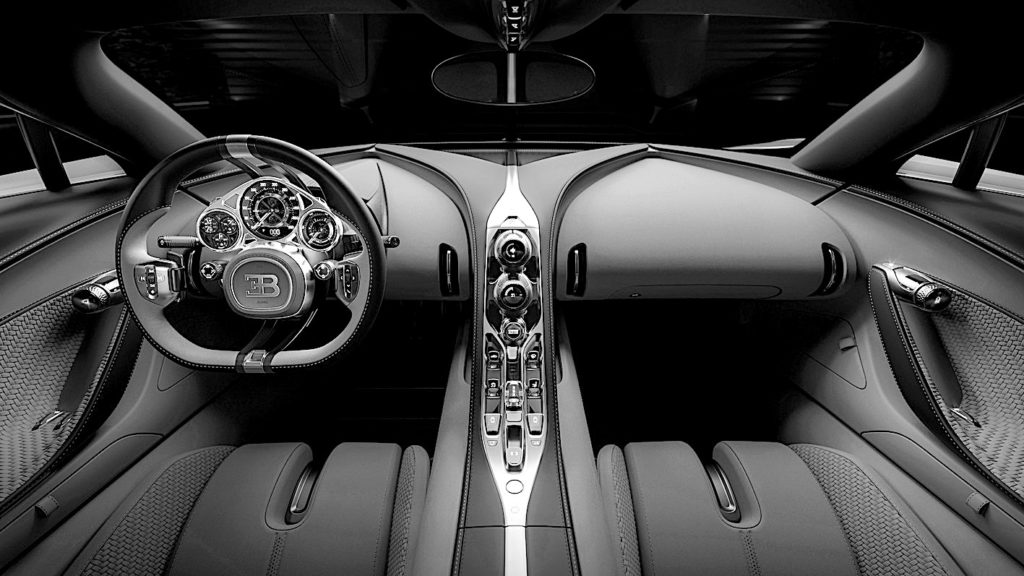
However, a high-definition digital screen – which the driver can make appear at will – displays the vehicle’s data and offers a number of connectivity options. The vehicle’s only screen – which displays the vehicle’s data and offers a number of connectivity options – remains completely hidden unless the driver wishes it to appear. A clever mechanism allows the touchscreen to be deployed from the top of the centre console – in portrait mode for the reversing camera in just two seconds, and in landscape mode in five seconds.
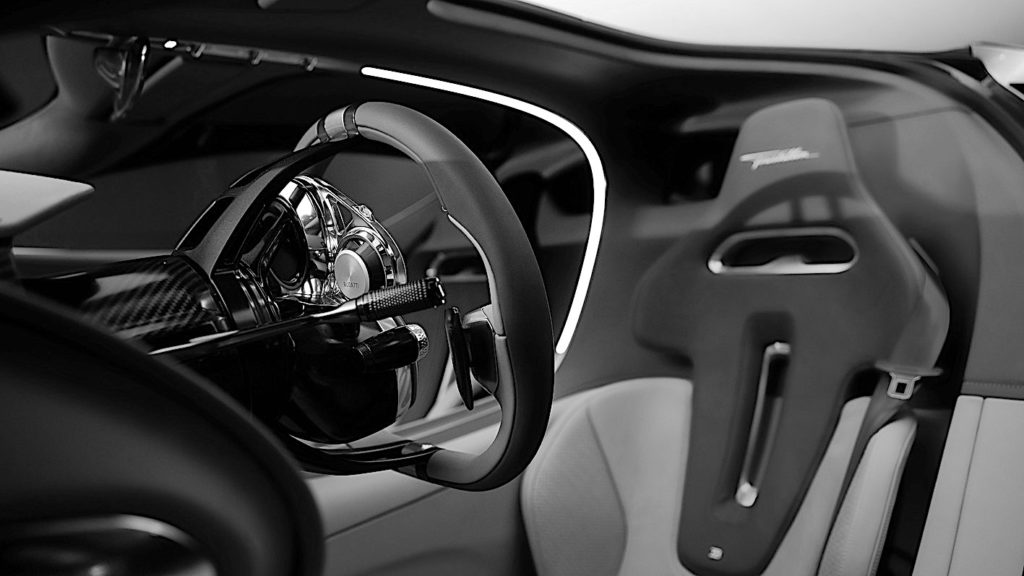
The seats are fixed to the monocoque to be as light and low as possible. And to ensure a comfortable riding position whatever the rider’s height, the pedals can be moved forward and back using an electric control. The result is a spacious interior that’s ideal for long journeys and daily commutes. As for the audio system, it dispenses with the traditional speakers and woofers and opts for an advanced system that uses exciters placed on the door panels and throughout the vehicle, where the interior panels act as speakers. This system is lighter and more powerful than traditional audio systems.

Christophe Piochon, President of Bugatti, says that “beyond the spectacular analogue innovations that have created a timeless interior like this, our focus has been on the authenticity of the materials and the perfection of each element. With the Tourbillon, we’re taking that impeccable craftsmanship and authenticity to the next level. Our all-new Bugatti platform has been designed down to the last detail to express the pursuit of engineering excellence.
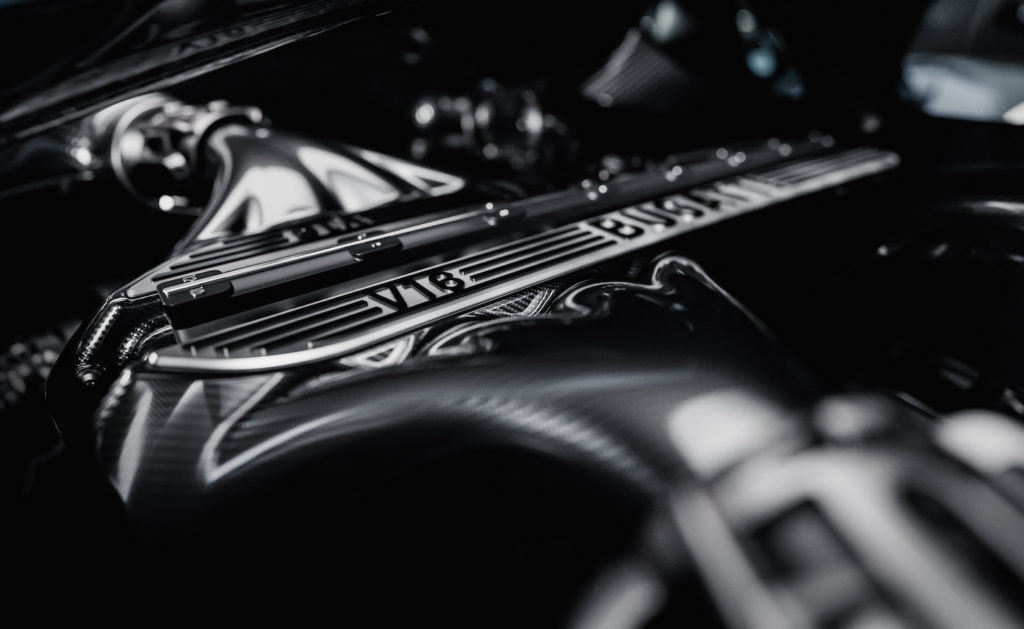
When it came out, the Bugatti W16 engine was unlike any other automotive engine in the world. With its four turbos and prodigious power, it set a new benchmark and pushed back the boundaries of combustion engine technology. Two decades after its launch, it still hasn’t been equalled, or even imitated. Following in its footsteps is another incomparable masterpiece of internal combustion engineering, combined with the instant torque and flexibility of electric motors.
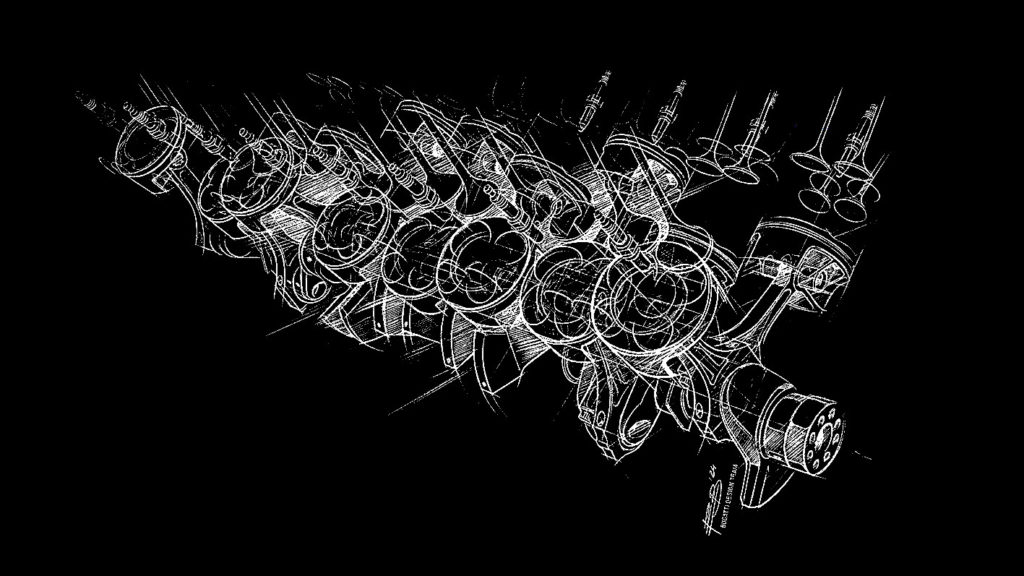
The new Bugatti is powered by an innovative naturally-aspirated 8.3-litre V16 engine – designed in collaboration with Cosworth – combined with two electric motors on the front axle and one electric motor on the rear axle. In total, the Tourbillon develops 1800 bhp, of which 1000 bhp is generated by the combustion engine and 800 bhp by the electric motors.
This is an extraordinary performance – made possible by a range of advanced materials and technologies – given that the Veyron achieved 1001 hp from its 8.0-litre engine with four turbochargers, and the new V16 is fully naturally aspirated. Made from lightweight materials, the engine weighs just 252 kg.
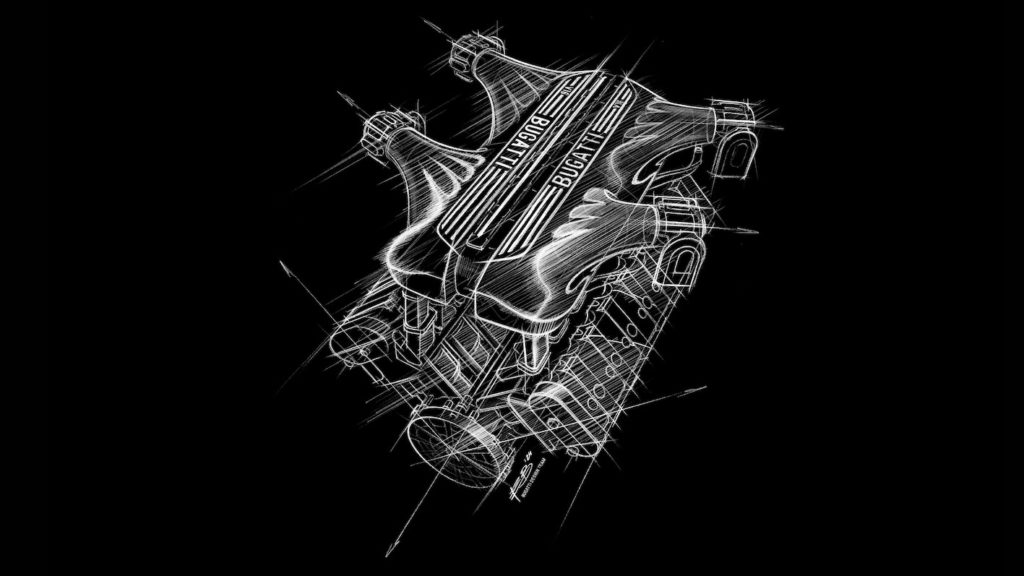
The electric motors are powered by a 25 kWh oil-cooled 800V battery housed in the central tunnel and behind the passengers. With its four-wheel drive and all-wheel torque vectoring system, the Tourbillon offers optimum traction and agility. The three electric motors deliver a total of 800 bhp. The electric motor, with its speed of up to 24,000 rpm and fully integrated dual silicon carbide inverter, offers one of the highest power densities in the world. The electric axles deliver more than 6 kW per kg of electric axle mass, including inverters, electric motors and gearboxes.
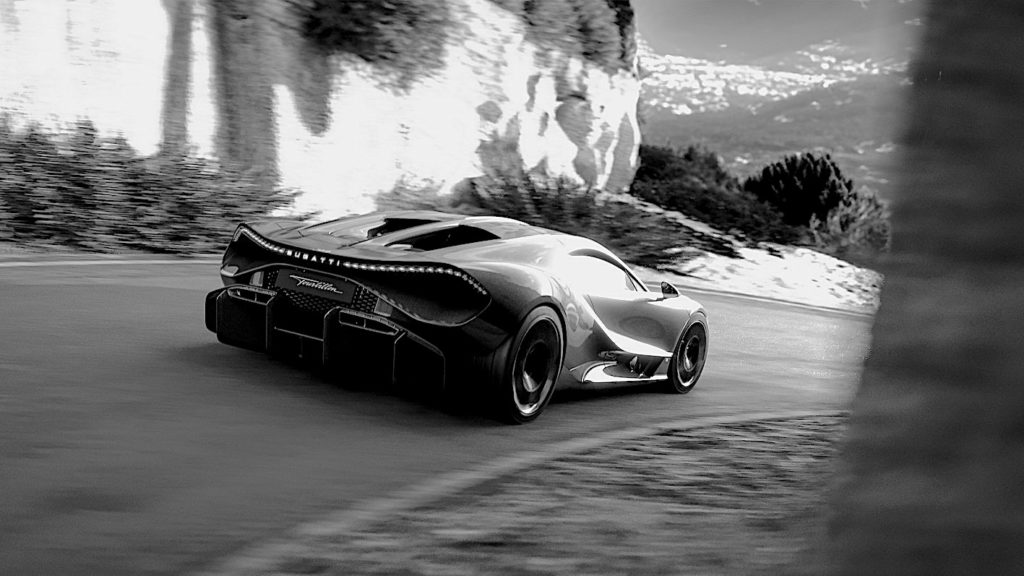
While the power, throttle response and additional torque offered by the ‘Torque-Fill’ function are priorities for the electric motor, the relatively high energy content of 25 kWh allows an all-electric range of over 60 km. The Tourbillon boasts significantly improved performance, a very powerful electric drive system and a large battery. Yet it is lighter than the Chiron, a testament to the incredible engineering behind this achievement. Thanks to its light weight and the instant torque provided by the electric motors, the Bugatti Tourbillon delivers breathtaking performance.
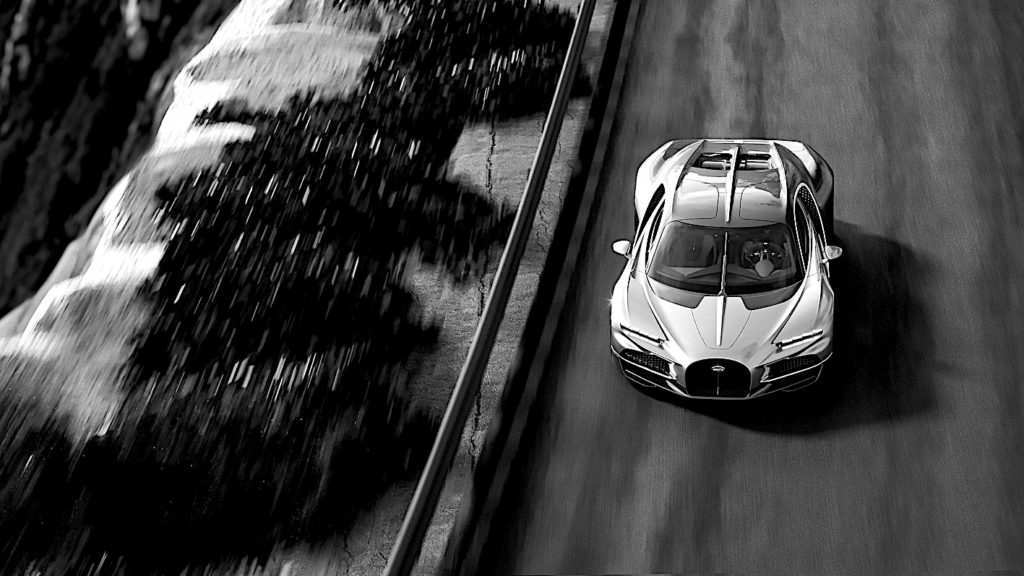
Emilio Scervo, Chief Technology Officer at Bugatti, says: “The Tourbillon had to be incomparable in every way. Our guiding principle was to take every aspect of the Chiron and improve it, seeking elegant and sophisticated technical solutions and new technologies to create a timeless masterpiece. Our aim is that you can take any element of the vehicle, inside, outside or under the bodywork, and think it could be displayed in an art gallery. The result is a Bugatti that is magnificent inside and out, the most powerful Bugatti to date, taking mechanical fascination and technical beauty to a whole new level.
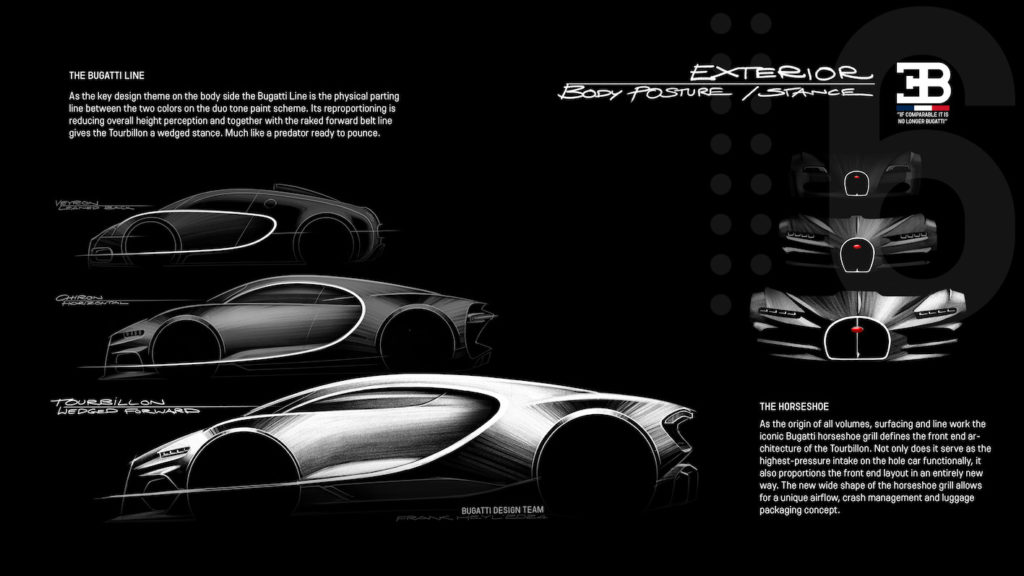
The engine is without doubt the most important decision we’ve had to make. We considered every possible option: redesigning the W16, going all-electric or revolutionising everything. In the end, we chose the most difficult option, creating an engine from scratch and combining it harmoniously with a complex system of electric motors, a new-generation dual-clutch eight-speed gearbox and many other innovations, all developed specifically for the Tourbillon. But we wanted this creation to retain the purity and raw analogue character of a naturally-aspirated combustion engine, while combining it with the agility and capability of electric motors.

The Tourbillon is built around a completely new chassis and body structure. The structure is made from a new-generation T800 carbon composite, which incorporates a host of weight-saving innovations such as the integration of the battery into the monocoque structure and a completely new composite anti-collision rear diffuser – inspired by top-level motor sport. The composite air ducts running across the front are also an integral part of the structure, optimising each component for greater rigidity and lightness.
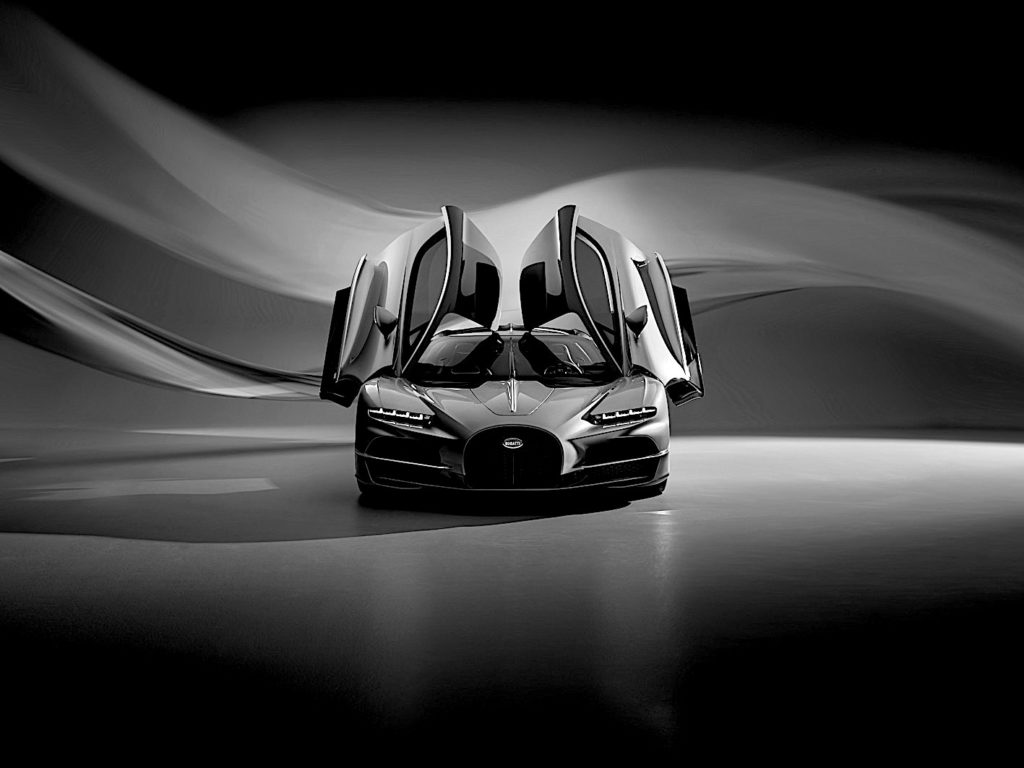
At the front and rear, the completely redesigned chassis incorporates forged aluminium multi-link suspensions, replacing the double wishbone steel construction of the Chiron. By opting for a new organically designed 3D-printed aluminium suspension arm and steering knuckle, the engineers have reduced the weight of the suspension by 45% compared with the Chiron.
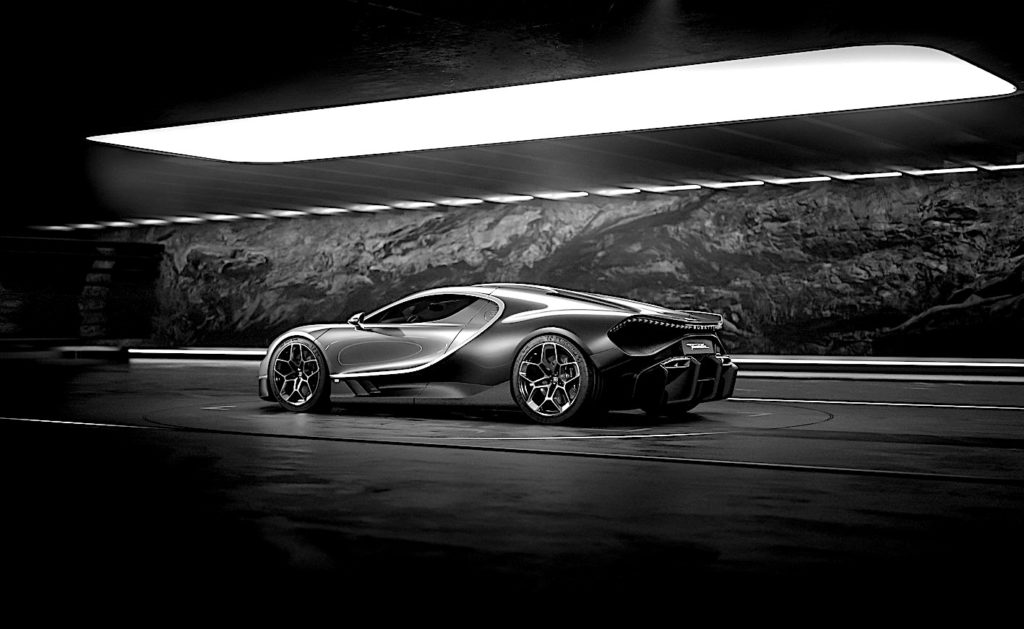
To improve the vehicle’s dynamics and aerodynamic performance, the rear has also been fitted with a 3D-printed aerodynamic hollow arm developed by AI. The Michelin Pilot Cup Sport 2 tyres – 285/35 R20 at the front and 345/30 R21 at the rear – were tailor-made for the Bugatti Tourbillon. In the new chassis, the ultra-compact and ultra-light electric front axle – equipped with two independent motors and the dual inverter – fits into the same volume as that available on the Chiron, adding complexity.
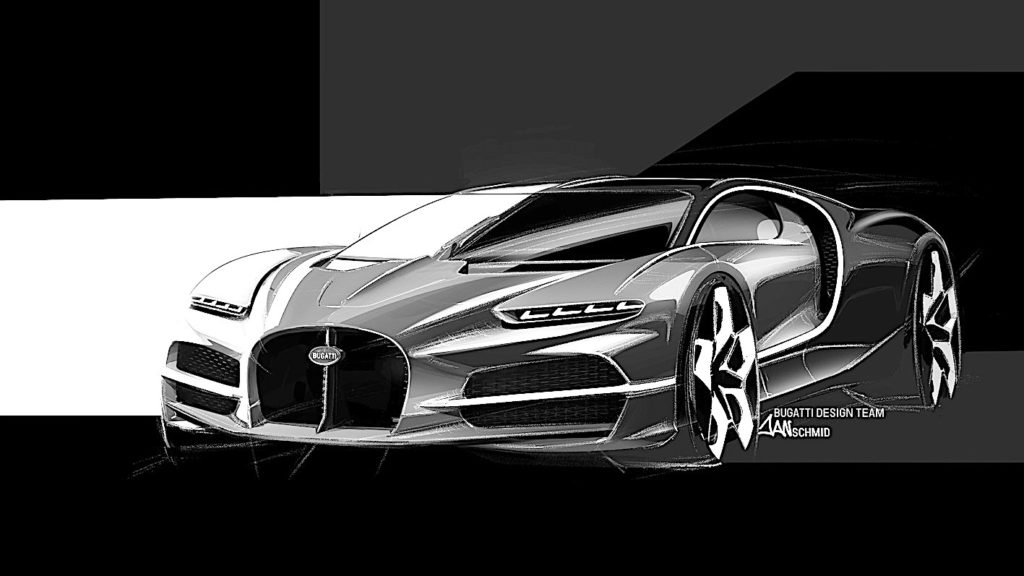
Mate Rimac, Bugatti CEO, confirms that “yes, it’s a crazy gamble to build a new V16 engine, integrate it with a new battery and electric motors, and offer authentic Swiss-made instruments, 3D-printed suspension parts and a crystal glass centre console. But that’s what Ettore would have done, and that’s what makes a Bugatti incomparable and timeless. Without such ambition, you can create a great hypersport, but you can’t create an icon ‘for eternity’.”
